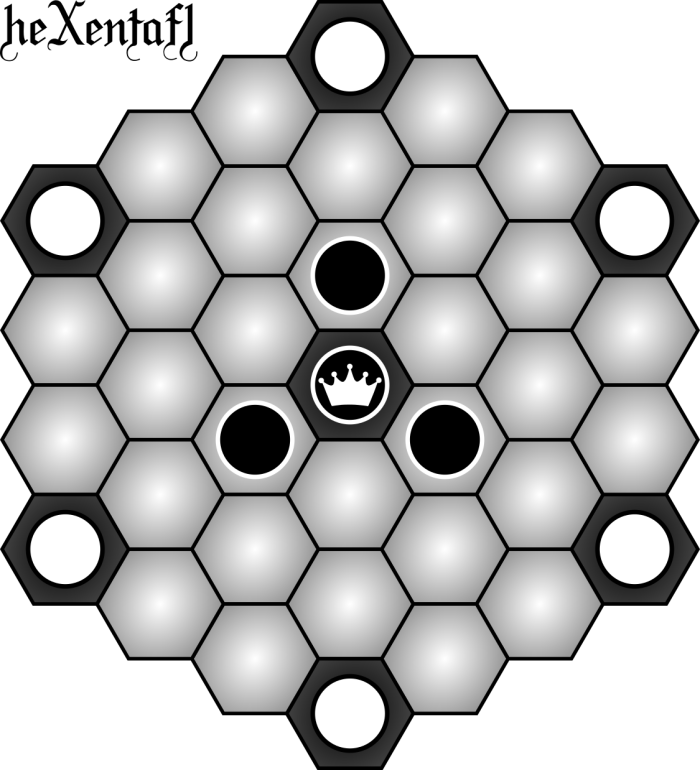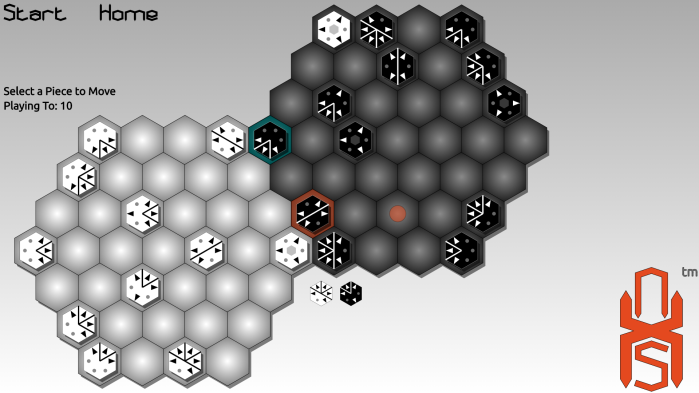I’ve been inspired lately to create variants of NXS. I think ultimately that will be a good thing. If I have several variants, it gives people options. A potential customer is more likely to feel they are getting a good value if they are getting “X games in one!” At least that’s my theory.
NXS on its own is a very flexible platform. Even without variants, you have short, medium, and long game options, with two or three (even 4!) players. There are several variants that are already up on the website. Of particular note is the random opening variant. Much like Chess 960, it allows each game to be a new experience for the players.
But I’ve also recently come up with a couple of variants that are even more out of the norm.
The first was inspired by Sovereign Chess. I was really fascinated by the idea of players controlling shared sets of pieces, and I didn’t see any reason why that wouldn’t work with NXS.
Double Agent is a two-player game, but players set up for a three-player game as usual (using any board setup). The third “player” is the Double Agent, a hostile third party.
Special rules for Double Agent:
- All special rules for three-player games apply (e.g. you must capture at least 1/3 of the needed territory from your opponent, and at least 1/3 from the Double Agent)
- Double Agents are always considered enemy pieces. You cannot jump over them to capture. They block you from capturing territory if they are in the way.
- Players take turns controlling the Double Agents. Assuming that Black and White are the two players, and that Red is the Double Agent:
- White moves a white piece, then rotates a white piece
- Black moves a black piece, then rotates a black piece
- Black moves a red piece, then rotates a red piece
- White moves a white piece, then rotates a white piece
- White moves a red piece, then rotates a red piece
- Continue alternating play (moving and rotating your pieces, and then the double agents) until someone has enough territory to win
- You cannot move a Double Agent piece in a way that would put it (or another Double Agent piece) in danger of being captured.
The next variant is a true departure. It was inspired by the many existing games that start with an empty board where players take turns adding a piece until the win condition is satisfied. Games like Go, Hex, and Blooms fall into this category (and as a side note, you can play Blooms on a NXS board).
All Aboard! is a two player variant of NXS played on a single game board. I would recommend selecting two colors for pieces (use all 14 pieces for each player), and use the third color for the board.
Players take turns either:
- Placing one of their pieces on any vacant board space
- Moving one of their pieces by the standard movement rules of NXS, or capturing an enemy piece using the standard NXS capture rules. If you move or capture, you must then rotate one of your pieces.
Players are trying to capture territory by using a modified territory capture rule.
Territory is captured by occupying an enemy hex,By having an unbroken line between your piece in enemy territory and your board edge,- Or by having an unbroken line between two pieces in enemy territory.
- Captured spaces are only counted once
You no longer get credit for just having your piece on the board, and obviously there is no home territory to connect to.
Play continues until someone captures enough territory to win. I would recommend 13-16 spaces.
And although it is not really a variant of NXS, as noted in my last post, you can play heXentafl on a NXS board using NXS pieces.
So, what do you think? Do variants weigh into your decision when considering purchasing a game?










